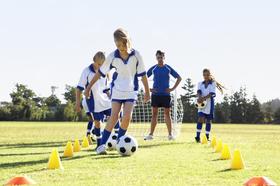Black Mesa Community School serves 55 students in grades Kindergarten-8.
The percentage of students achieving proficiency in math is ≤10% (which is lower than the Arizona state average of 35%). The percentage of students achieving proficiency in reading/language arts is ≤10% (which is lower than the Arizona state average of 40%).
The student:teacher ratio of 14:1 is lower than the Arizona state level of 17:1.
Quick Stats (2025)
- Grades: Kindergarten-8
- Enrollment: 55 students
- Student:Teacher Ratio: 14:1
- Math Proficiency: ≤10%
- Reading Proficiency: ≤10%
- Science Proficiency: <50%
- Source: National Center for Education Statistics (NCES), AZ Dept. of Education
Top Rankings
Black Mesa Community School ranks among the top 20% of public schools in Arizona for:
Category
Attribute
Percent Eligible For Free Lunch
Community Size
School Overview
Black Mesa Community School's student population of 55 students has declined by 12% over five school years.
The teacher population of 4 teachers has declined by 42% over five school years.
Grades Offered
Grades Kindergarten-8
(No virtual instruction)
(No virtual instruction)
Total Students
55 students
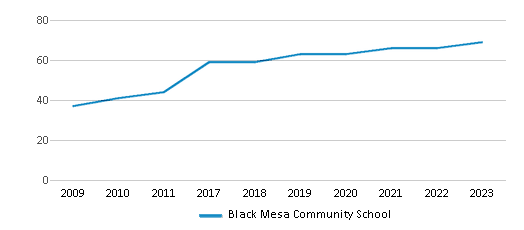
Gender %
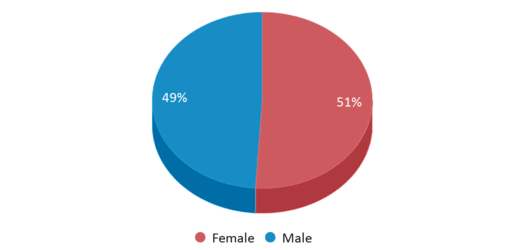
Total Classroom Teachers
4 teachers
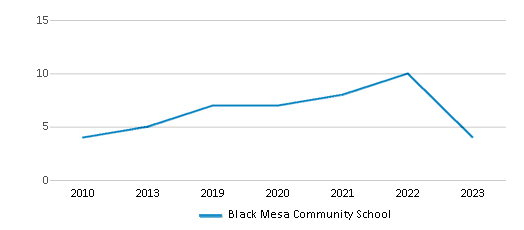
Students by Grade
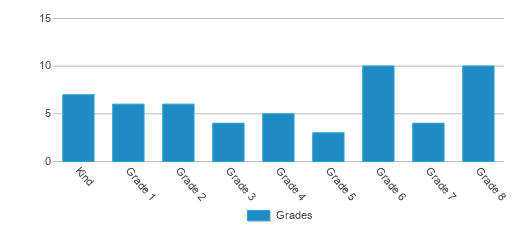
School Calendar
School Rankings
The diversity score of Black Mesa Community School is 0.00, which is less than the diversity score at state average of 0.66. The school's diversity has stayed relatively flat over five school years.
Math Test Scores (% Proficient)
≤10%
35%
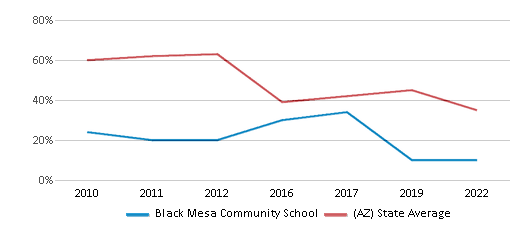
Reading/Language Arts Test Scores (% Proficient)
≤10%
40%
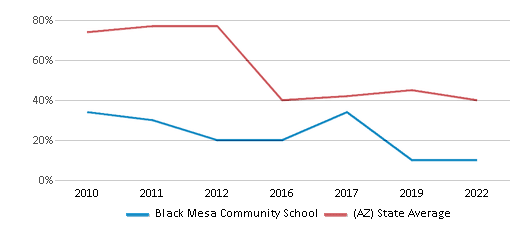
Science Test Scores (% Proficient)
<50%
24%
Student : Teacher Ratio
14:1
17:1
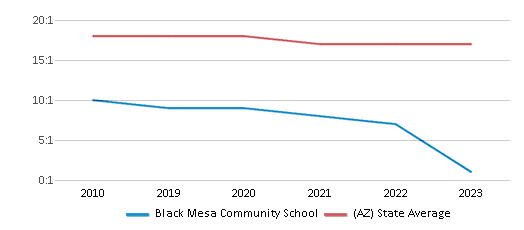
American Indian
100%
5%
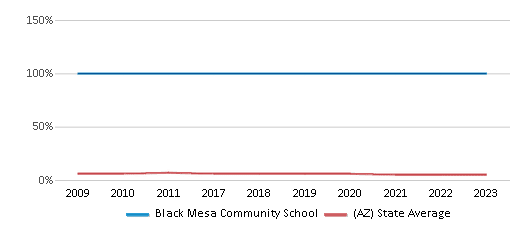
Asian
n/a
3%
Hispanic
n/a
48%
Black
n/a
6%
White
n/a
34%
Hawaiian
n/a
n/a
Two or more races
n/a
4%
All Ethnic Groups
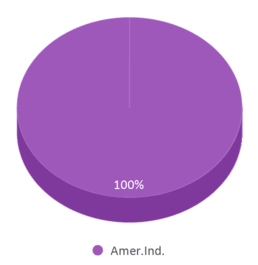
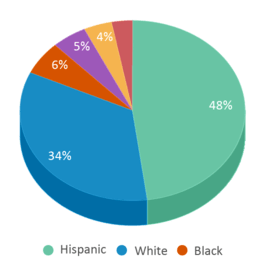
Participates in the National School Lunch Program (NSLP)
Yes
Eligible for Free Lunch
95%
40%
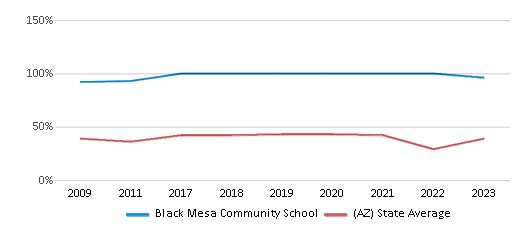
School Statewide Testing
School District Name
Source: National Center for Education Statistics (NCES), AZ Dept. of Education
Profile last updated: 02/09/2025
Frequently Asked Questions
What percent of students have achieved state testing proficiency in math and reading?
≤10% of students have achieved math proficiency (compared to the 35% AZ state average), while ≤10% of students have achieved reading proficiency (compared to the 40% AZ state average).
How many students attend Black Mesa Community School?
55 students attend Black Mesa Community School.
What is the racial composition of the student body?
100% of Black Mesa Community School students are American Indian.
What is the student:teacher ratio of Black Mesa Community School?
Black Mesa Community School has a student ration of 14:1, which is lower than the Arizona state average of 17:1.
What grades does Black Mesa Community School offer ?
Black Mesa Community School offers enrollment in grades Kindergarten-8 (No virtual instruction).
What school district is Black Mesa Community School part of?
Black Mesa Community School is part of Black Mesa Community School District.
School Reviews
Review Black Mesa Community School. Reviews should be a few sentences in length. Please include any comments on:
- Quality of academic programs, teachers, and facilities
- Availability of music, art, sports and other extracurricular activities
Recent Articles
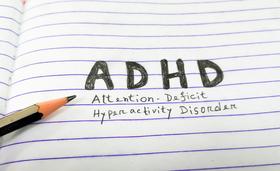
Understanding ADHD in Children: Signs, Diagnosis, and Support Strategies
We explores the complex nature of attention-deficit/hyperactivity disorder (ADHD) in children, providing insights into its symptoms, diagnosis process, and effective support strategies. From recognizing early signs to navigating the diagnostic journey, parents will gain valuable knowledge to help their child thrive. Expert insights, real-life examples, and practical tips empower readers to create a supportive environment that meets the unique needs of children with ADHD.
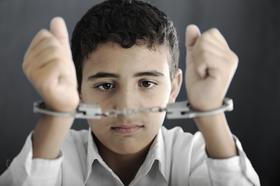
School-to-Prison Pipeline Persists Despite Local, State and National Efforts
Inadequate funding and resources for schools, harsh zero-tolerance discipline policies, police presence in public schools, and de facto segregation continue to create school environments in which poor and minority students have little chance of succeeding. The result is a continuation of the school-to-prison pipeline that has been commonplace in the American education system for decades, despite federal, state and local efforts to curb the problem.
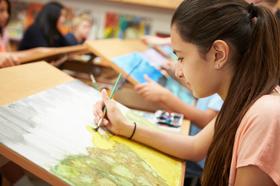
How the Arts Benefit Your Children Academically and Behaviorally
Often underfunded in the past, the arts are gaining a resurgence in support as research shows benefits for children academically, along with improvements in behavior and attendance.





